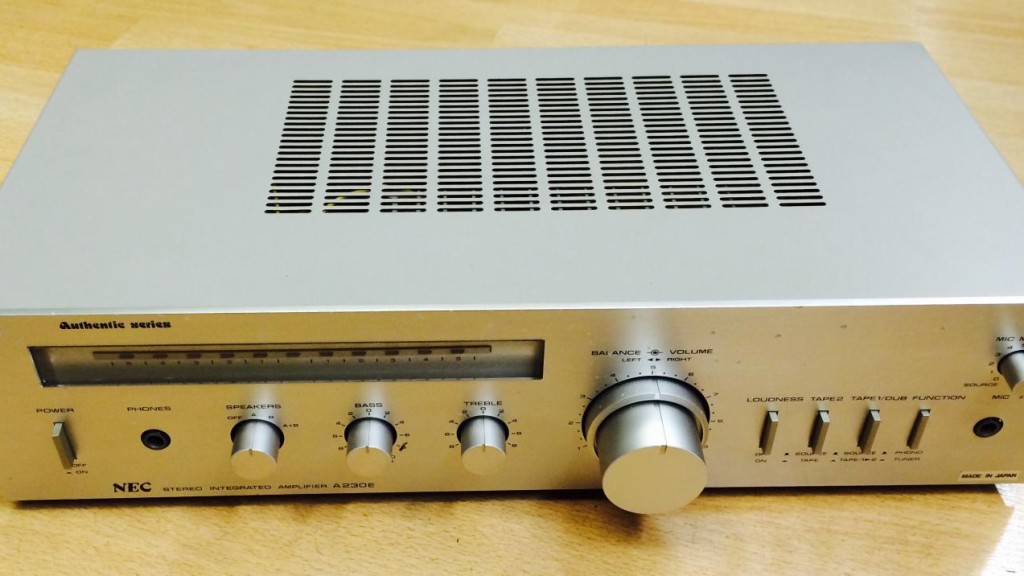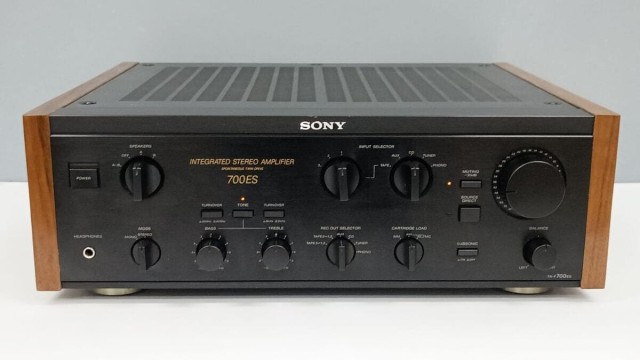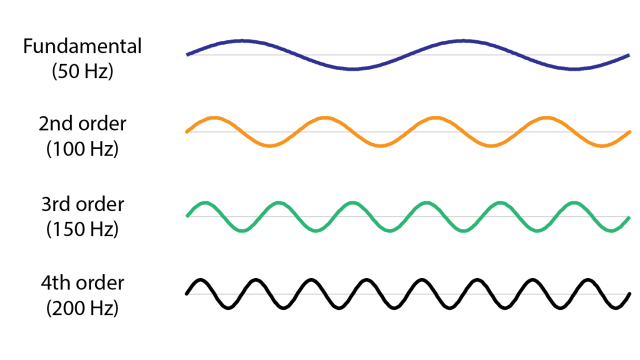
The NEC Authentic series, japan hi-fi tech of 80's
The NEC Authentic series was a line of high-end audio equipment produced by NEC (Nippon Electric Company) during the 1980s, designed to compete with the top audio brands in the growing hi-fi market. NEC, traditionally known for its electronics and telecommunications equipment, ventured into consumer audio with the goal of combining advanced technology with superior sound quality, branding its "Authentic" series as premium audio products.
Design Philosophy and Goals
NEC's Authentic series aimed to deliver a pure, accurate, and natural sound that stayed true to the source material. NEC invested in rigorous R&D and leveraged its technological expertise to create high-quality components that prioritized sonic transparency and fidelity. The Authentic series was targeted at discerning audiophiles who valued not only sound quality but also innovative technology and design aesthetics.
The components were crafted with robust materials and housed in sleek, often minimalist designs, giving the Authentic series an appeal that mirrored its technical sophistication. In terms of technology, NEC incorporated unique circuit designs, high-quality transistors, and capacitors, all aimed at delivering superior performance.
Key Components and Features
The NEC Authentic series included a variety of audio components, each engineered for high fidelity. Here are some notable products from the series:
Integrated Amplifiers: NEC released several integrated amplifiers in the Authentic line, such as the NEC A-11 and NEC A-10. These amplifiers were known for their low distortion, high output power, and broad frequency response. They featured unique circuit designs that minimized noise and delivered clean, precise amplification. The use of high-quality parts like custom capacitors and robust transistors was a hallmark of these amplifiers.
Power Amplifiers: NEC also offered standalone power amplifiers under the Authentic brand, such as the NEC M-50 and M-70 models. These amplifiers were designed to deliver high power without sacrificing clarity, making them suitable for larger speaker setups. They featured NEC’s unique "Direct Signal Path" technology, which aimed to minimize signal degradation by reducing the number of internal components between input and output.
Preamplifiers: The Authentic series preamplifiers, like the NEC C-50, were engineered to provide transparent sound with a low noise floor, ensuring minimal signal alteration before amplification. They featured precise tone controls and a wide range of inputs, accommodating everything from turntables to early digital sources. NEC’s preamplifiers were known for their straightforward, clean designs and easy-to-use interfaces.
Tuner: NEC also offered tuners in the Authentic line, such as the NEC T-710, which featured high-sensitivity FM/AM reception and accurate tuning, designed to provide clear sound quality with minimal interference. These tuners incorporated advanced signal processing circuits that helped to capture distant stations with minimal distortion.
Speakers: The Authentic series extended to speakers, engineered with high-quality drivers and materials to match the high fidelity of NEC’s electronic components. Though less common than the other NEC products, Authentic series speakers were praised for their balanced sound and rich, detailed playback across various frequency ranges.
Technological Innovations
The Authentic series reflected NEC’s emphasis on innovative technology with features like Direct Signal Path and low-impedance power supplies, which minimized noise and signal loss. NEC engineers focused on delivering high dynamic range, especially in their amplifiers, with designs that avoided unnecessary embellishments to keep the signal chain as clean as possible.
NEC’s use of precision components was also a significant selling point. They sourced high-quality capacitors, resistors, and transistors for the Authentic series, and the build quality of these components contributed to the reliability and longevity of the equipment, with many Authentic models still in use today. Additionally, NEC explored custom heat dissipation systems and cooling technologies, allowing their power amplifiers to maintain stable performance under demanding audio loads.
Legacy and Collectability
Though NEC eventually exited the high-end audio market, the Authentic series has garnered a dedicated following among vintage audio enthusiasts and collectors. Today, these components are highly regarded on the second-hand market, not only for their sound quality but also for their build quality and design. The amplifiers, in particular, are valued for their warm, dynamic sound, which many audiophiles associate with the classic audio of the 1980s.
The NEC Authentic series represents a unique chapter in the company's history, showcasing NEC’s technical prowess in consumer audio. These products remain popular among those who appreciate the distinct, uncolored sound that NEC achieved, and they hold a special place in the realm of high-fidelity audio for their role in making high-quality sound more accessible.









